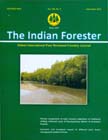Economic and Ecological Impact of Different Joint Forest Management Models in Orissa
DOI:
https://doi.org/10.36808/if/2012/v138i9/21795Keywords:
Forest Benefits, Government of Orissa, JFM Models, StakeholdersAbstract
Joint Forest Management (JFM) was introduced into Orissa on 1st June 1988 by JFM resolution. It involves sharing forest benefits and forest management responsibility between the state and the community, and it currently covers 1,061,705 ha. Government of Orissa's efforts for encouragement of participatory forest management through people's participation by different JFM models have positive impacts on forest management and livelihood of forest dwellers but still there is need of continuous effort to recognize Peoples institutions (PIs) with an optimistic approach of development practitioners for JFM programme to make it more people-centric. This study suggests that empowerment of the user group, peoples' institutions, greater devolution of power, functionaries and funds, active participation of the stakeholders, due weightage to entitlements of the community, etc. are likely to benefit the forest-dependent poors most in future and sustainable management of forest.Downloads
Download data is not yet available.
Downloads
Published
2012-09-01
How to Cite
Behera, M., & Sinha, B. K. P. (2012). Economic and Ecological Impact of Different Joint Forest Management Models in Orissa. Indian Forester, 138(9), 776–782. https://doi.org/10.36808/if/2012/v138i9/21795
Issue
Section
Articles
License
Unless otherwise stated, copyright or similar rights in all materials presented on the site, including graphical images, are owned by Indian Forester.





